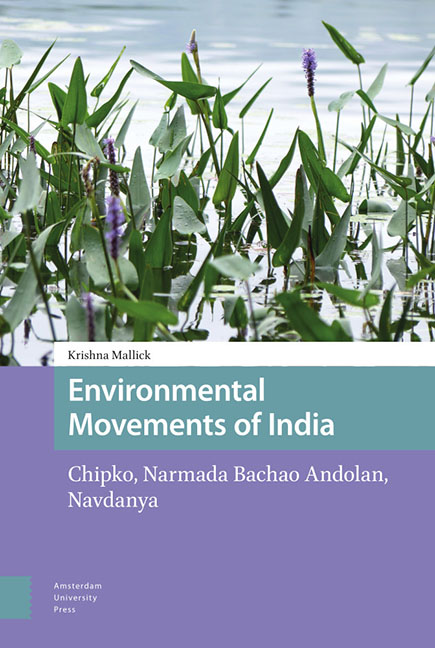Book contents
- Frontmatter
- Dedication
- Contents
- Acknowledgments
- Foreword
- Glossary
- Introduction: Three Grassroots Movements That Made a Global Impact
- 1 Historical and Cultural Contexts in India
- 2 Chipko (Hug the Trees) Movement
- 3 Narmada Bachao Andolan (NBA): Save the Narmada
- 4 Navdanya (Nine Seeds) Movement
- 5 Moral Implications of Environmental Movements
- 6 Hindu Ethics and Ecology
- Conclusion: The Symbiosis of Natural Resources and Local Needs
- Index
2 - Chipko (Hug the Trees) Movement
Published online by Cambridge University Press: 13 November 2021
- Frontmatter
- Dedication
- Contents
- Acknowledgments
- Foreword
- Glossary
- Introduction: Three Grassroots Movements That Made a Global Impact
- 1 Historical and Cultural Contexts in India
- 2 Chipko (Hug the Trees) Movement
- 3 Narmada Bachao Andolan (NBA): Save the Narmada
- 4 Navdanya (Nine Seeds) Movement
- 5 Moral Implications of Environmental Movements
- 6 Hindu Ethics and Ecology
- Conclusion: The Symbiosis of Natural Resources and Local Needs
- Index
Summary
Abstract
This chapter examines the iconic Chipko movement of the 1970s that protested against deforestation in the Himalayan region using the nonviolent gesture of hugging the trees, thereby showing the interconnectedness of the poor women's livelihood with natural resources. The movement had three strands: one led by Chandi Prasad Bhatt, the second led by Sunderlal Bahuguna which applied the Gandhian method of satyagraha and was embraced mostly by poor women of the region, and the third being the Marxist and radical strand which was later dissolved. The chapter explores how the Chipko movement emerged initially as a peasants’ movement but later became quite complex and attracted great public support within India and outside. This was the first time that the environmental aspect was introduced into the development discourse.
Keywords: Chandi Prasad Bhatt, Sunderlal Bahuguna, Gaura Devi, social justice, the myth of Chipko
Although the Chipko movement holds a special place in environmental history as the first demonstration of ecofeminist ideas in action, the movement evolved from a long history of challenges to the demands of commercial forestry. By 1921, as Guha (1989) reports, there was ‘a near total rupture between the colonial state and its subject population’ (p. 137). Peasant protests against the Forest Acts and government attempts to break them up or calm them down continued for decades. The activists’ protest tactics included a variety of nonviolent models such as strikes, ‘go-slow’ protests by porters for visiting officials, refusals to pay fines, and subversion (the standard technique of burning litter on the forest floor to open it up for grazing had been banned in order to improve tree regeneration) (Guha, 1989). The protests were rebellious and met with state violence, notably in Tehri Garhwal in the 1940s.
Decades later, continued conflict over access to forests and the allocation of felling rights as well as ecological problems like landslides and floods led to a series of nonviolent actions to prevent contractors from logging forests. Scholars delineate three streams within the broader Chipko movement: one in the Chamoli area led by Chandi Prasad Bhatt, who was deeply influenced by socialist ideology; another led by Sunderlal Bahuguna in Garhwal; and a third led by Uttarakhand Sangharsh Vahini (USV) in Kumaon.
- Type
- Chapter
- Information
- Environmental Movements of IndiaChipko, Narmada Bachao Andolan, Navdanya, pp. 37 - 58Publisher: Amsterdam University PressPrint publication year: 2021



